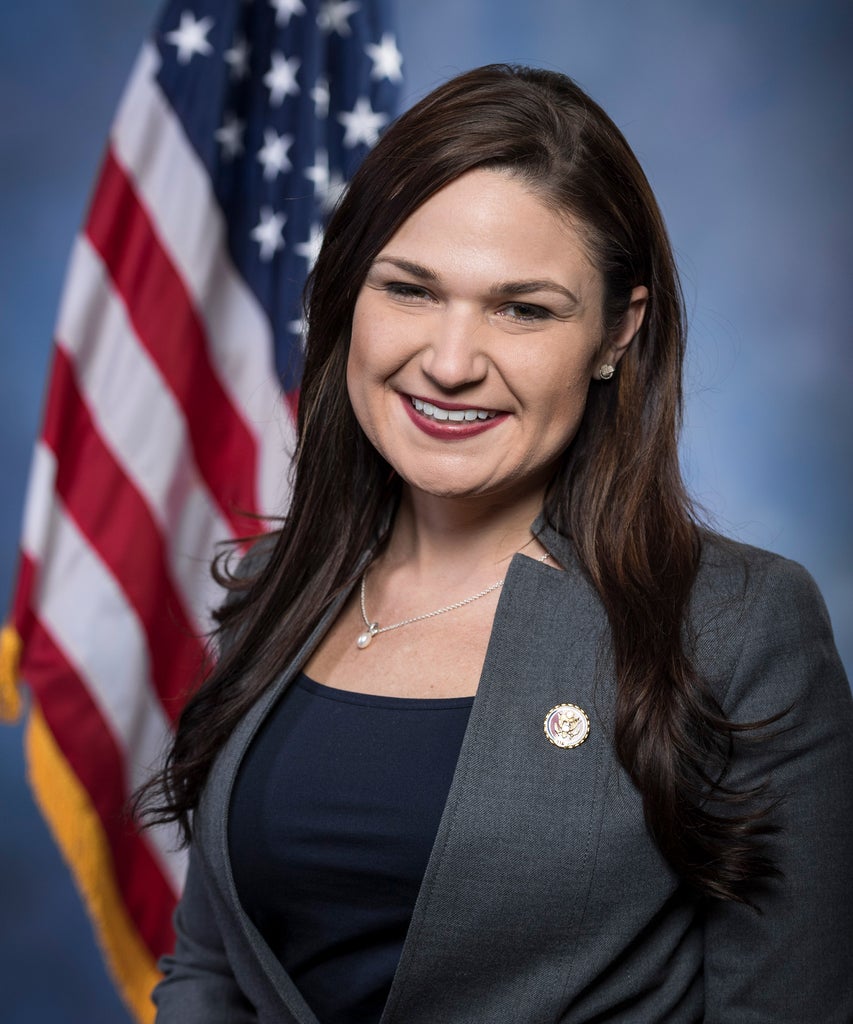Congresswoman Abby Finkenauer: Why I Fought To Double Endometriosis Funding
August 03, 2020DMT Beauty#DMTBeautySpot #beauty

Congresswoman Abby Finkenauer couldn’t help but smile as she stood on the floor of the House of Representatives on Thursday, July 30. The Iowa Democrat was speaking into a microphone, asking Congress to vote “aye” on her amendment to double federal endometriosis funding.
“Walking on the floor knowing what we were about to do [was] huge,” Finkenauer tells Refinery29. “I had hope for, really, the first time since being diagnosed with this condition when I was 18.” The amendment passed, taking research funding for the condition from a mere 13 million to 26 million.
One in 10 million women worldwide have endometriosis, a complex condition with no cure. For years it’s been billed as just an especially painful period, but, all told, it occurs when endometrial tissue grows outside of the uterus. It can lead to all kinds of painful problems not limited to period pain, like inflammation, chronic pelvic pain, fertility issues, heavy bleeding, and serious fatigue. “This ‘misplaced’ tissue [growing outside the uterus] acts like regular uterine lining during the period,” Natalie Burger, MD, a reproductive endocrinologist at Texas Fertility Center who often treats endometriosis, tells Refinery29. “It can break apart and bleed. As there is nowhere for this blood and tissue to go, it can irritate the surrounding tissue and cause scarring to occur… Most commonly it impacts the ovaries, fallopian tubes, and the tissue lining the pelvis.”
Women feel endometriosis pain in a variety of ways, and it can often be debilitating. In March, Finkenauer opened up the condition publicly for the first time on the House floor. Although she was recently engaged and hopes to start a family with her fiancé in Iowa someday, she found herself doubled over on her bed, Googling the word “hysterectomy” — an extreme form of treatment that usually relieves suffering for endometriosis patients but leaves them unable to bear children. She was experiencing the familiar feeling of the endometriosis pain she’d know for more than a decade, which for her felt like a “stabbing in my lower left abdomen and a tight pain like two fists clenched together in a vise grip in my lower back.” Her Google search that night led her to the Endometriosis Foundation of America’s website, where she learned that the condition was the number one reason why women in their 30s got hysterectomies.

She had to make change, and she knew that change is often a result of funding. That’s why she formed the House Endometriosis Caucus early this year, and, as of this Thursday, doubled endometriosis funding. She got her 26 million, which is still pale in comparison to the $709 million the NIH has invested in breast cancer research last year or the $263 million they put into prostate cancer research. The amendment passed, and Finkenauer was thrilled — but she knew there was still work left to do.
“It’s a step in the right direction, but at the end of the day we need a lot more funding to make up for all these years of women suffering,” she tells me, noting that generally, women’s health research is underfunded. “We’ve known about this condition since the 1920s, and yet it’s still remained one of the lowest funded [areas].” She adds that if you consider the 7 million women who have endometriosis in the U.S., the funding of last year broke down to about 82 cents spent per person with the condition. “Luckily, yes, we just doubled that, but we have to continue to do more,” she says.
Dr. Burger says that some of the research already happening in the world on endometriosis includes expanding treatment and figuring out how to diagnosis it more easily so that it can be detected and treated at an earlier stage. Currently it can only be diagnosed via a laparoscopy, which involves placing a skinny camera into the abdomen while a patient is anesthetized. This funding may help us answers these questions more quickly, Finkenauer hopes. “We need to figure out why this condition happens in the first place,” she said while proposing her amendment for funding. “Does it start at birth? Later in life? Can it happen starting in adolescence? There are so many unknowns.”
After her amendment passed, the Congresswoman wasn’t just thinking of herself. Her mind also went to the many women who shared their stories of endometriosis pain with her. Although Finkenauer tells Refinery29 that one of her first memories of the stabbing pain occurred around age 12, there was light at the end of a tunnel in an “early” diagnosis. Her parents believed her when she said she wash hurting, and kept taking her to doctors until they found an answer for what was going on with her. Many folks aren’t so lucky. An average patient will spend as long as a decade trying to find an accurate answer to why she’s doubled over on her bed, covered in heating pads, according to international research.
To the brave women from #ia01 & across US who have reached out sharing your stories & your pain- today we inched closer to answers.
— Abby Finkenauer (@Abby4Iowa) July 30, 2020
Endometriosis has been one of the lowest funded conditions at NIH & now the house just passed my amendment to double research. More to do #upendo pic.twitter.com/qfIgmOvY7N
This was the case for Georgie Wileman, 31, the creator of This Is Endometriosis and a long-time sufferer of both endometriosis and its sister disease adenomyosis, which means the tissue that normally lines the uterus grows into its muscular wall. “I didn’t get diagnosed for 13 years, and in that time there was a lot of disbelief from medical professionals and from family members, and it was incredibly damaging,” Wileman tells Refinery29.
Wileman believes funding for the condition should have been improved years ago, but says she’s not surprised it took someone who knew the devastation endometriosis can cause firsthand to get an amendment through. “It’s a hard disease to relate to,” she says. “The level of pain is graded higher than labor and it’s hard for people, particularly people who haven’t suffered from chronic pain, to get their head around that.”
Finkenauer has heard from many people like Georgie across the country. She thought of them as her amendment was approved, and as she pushed for bipartisan support for funding — even at a time when our two parties seem more divided than ever on topics such as coronavirus relief funding, and even on wearing face masks to protect from COVID-19. “When it comes to endometriosis, it doesn’t matter where you live, or if you’re a Democrat or a Republican, it can affect you or someone you know and love,” She says. “I truly believe I was able to get this funding, for one, because I wasn’t gonna take no for an answer.”
Like what you see? How about some more R29 goodness, right here?
My Endo Went Undiagnosed for Two Decades
Padma Lakshmi On Endometriosis Awareness
How Important Is Diet When Treating Endometriosis?
DMTBeautySpot
via https://www.DMTBeautySpot.com
Molly Longman, Khareem Sudlow

0 comments